
views
Getting Medical Help
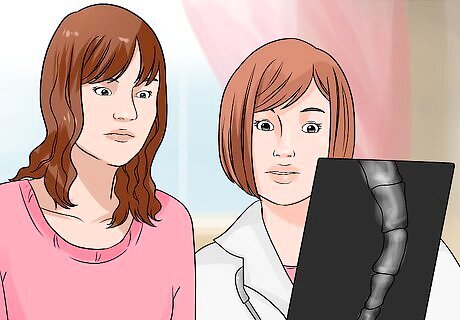
Visit your physician for an examination. Your doctor will know what to look for when evaluating tailbone pain. He may take x-rays or order CT scans or an MRI. The two most effective tests in diagnosing coccydynia are the injection of a local anesthetic into the tailbone area, to see if that temporarily relieves the pain, and comparing x-rays taken sitting and standing, to see if the coccyx is dislocating when you sit. Your doctor could also look for pilonidal cysts, which are cysts that occur only in the tailbone region, and are caused by infection of ingrown hair follicles. Successful treatment of these kinds of cysts may help relieve pain or remove pain altogether.

Familiarize yourself with the symptoms associated with tailbone injury. You will need to visit your doctor for a diagnosis, but knowing the symptoms may help you determine if your tailbone is causing the problem. Identifying symptoms could also give your doctor valuable information. Symptoms of tailbone injury include: symptoms: Pain in the tailbone or coccyx without pain in the lower back Pain when rising from a seated position to a standing position Frequent need to defecate or pain while defecating Relief of pain when sitting on legs or only on one buttock
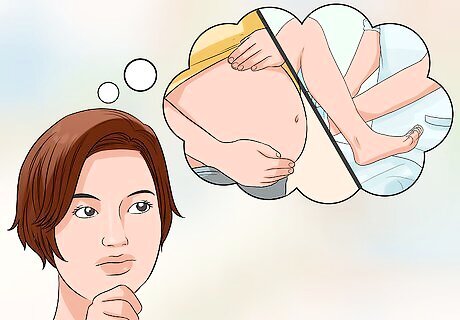
Consider potential causes of your tailbone pain. If you injured your tailbone in some way, tell your doctor about it during your appointment. It may help your doctor to determine the correct treatment for your situation. By some estimates, coccydynia is roughly five times more common in women than it is in men. This may be due to injuries to the tailbone that may occur during childbirth.
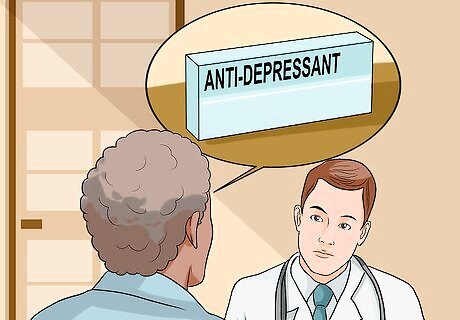
Ask your doctor about prescription drugs. Some medications may help to alleviate pain in your tailbone. For example, anti-epileptics and antidepressants have been found to be effective at alleviating tailbone pain. Ask your doctor about the possibility of taking one of these medications. Keep in mind that opiates are not typically given unless there is a fracture to the tailbone. If you have fractured your tailbone, your doctor may prescribe a prescription painkiller to help alleviate the pain. An x-ray would be required to determine if you have a fracture in your tailbone.>

Consider surgery if all else fails. Most patients who undergo surgery to relieve coccygeal pain have already tried nonoperative treatments with little effect. Exhaust the nonoperative options before you move on to painful, and sometimes debilitating, surgery. If the pain is severe enough, occurs daily for 6 months or more, and/or it interferes with your quality of life, then request a referral to an orthopedist who specializes in removal of the coccyx.
Using Home Remedies

Ice the area. Apply a towel-wrapped bag of ice, an ice pack, or a bag of frozen veggies to your tailbone for 5-10 minutes at a time. This may help to relieve pain and reduce inflammation. For the first 48 hours after an injury to your tailbone, you can apply ice once per hour that you are awake. After 48 hours you may apply ice for comfort, 3-4 times daily in the same manner. Because your tailbone doesn't have a lot of padding over it, you may only be comfortable icing the area for about 5 minutes at a time.
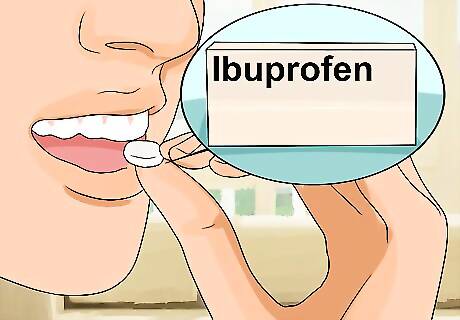
Use an over the counter painkiller. Take non-steroidal anti-inflammatory drugs (NSAIDS) to reduce pain and swelling. These over-the-counter (OTC) products, such as ibuprofen or acetaminophen, can be purchased at any pharmacy or drugstore. Take 600 mg of ibuprofen every eight hours, or take 500 mg of acetaminophen every 4 hours. Do not exceed 3500 mg of acetaminophen in a 24-hour period.

Correct your posture. Poor posture may be contributing to your tailbone pain. Try to sit upright, with your core engaged, your neck straight, and your back slightly arched. If you get a sharp pain when getting up from a sitting position, lean forward and arch your back before rising.

Sit on a cushion. Special cushions, with a section cut out underneath the tailbone, are designed especially for patients with tailbone pain. This may help relieve some of the pain associated with sitting down. It is possible to make your own cushion from a piece of foam rubber. Just cut out a hole in the center so it is shaped like a toilet seat. Cushions shaped like a doughnut are not found helpful by most patients, as they are designed to relieve pressure on the genitals rather than the tailbone. Talk to your doctor about use of a wedge-shaped pillow.
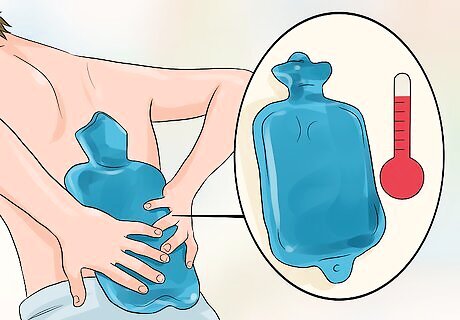
Apply a heating pad. Studies show that applying heat to the tailbone area may decrease pain. Use a heating pad up to 4 times per day for 20 minutes each time. Try a warm compress or hot bath if you do not have a heating pad.
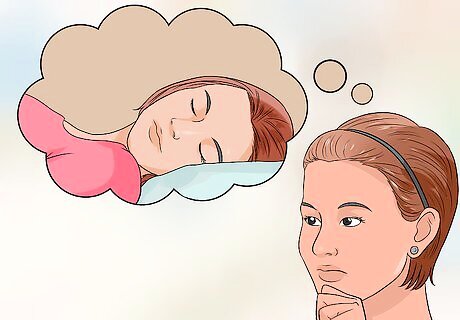
Plan for a period of rest and recovery. If it turns out that you have a tailbone fracture, there is no cast that can be placed on the tailbone. You will just have to rest and avoid any strenuous activities for about eight to 12 weeks. If you have a physical job, you may need to arrange to take some time off from work while your body heals.

Refrain from straining during bowel movements. Some people experience pain while defecating as a result of tailbone pain. Do your best to avoid constipation by getting plenty of fiber and fluids in your diet. If necessary, take a mild stool softeners while your tailbone is healing.




















Comments
0 comment